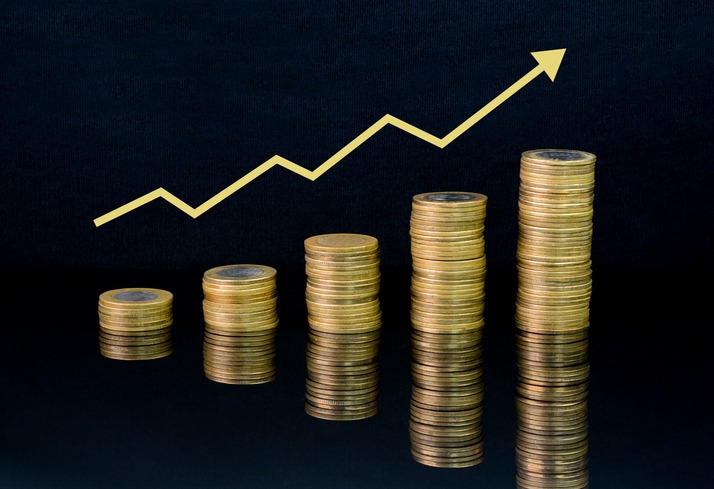What You Need to Know about the Recent Breakout in the Gold
After months of downward pressure, the precious metals sector finally rebounded in November, with gold prices rising by about 7%, and silver prices jumping by nearly 13%.

After months of downward pressure, the precious metals niche of the financial markets finally staged a breakout during the month of November. Gold prices were up nearly 7% last month, while silver prices jumped about 13% over the same period.
For bullish investors and traders, recent momentum in the metals sector has been a welcome reprieve. Since peaking in March of this year, the precious metals sector had been slowly—but steadily—trending lower.
Earlier in 2022, the outbreak of war in Eastern Europe pushed gold prices back toward all-time highs—above $2,000/ounce. Those levels didn’t hold, unfortunately, and over the course of the proceeding seven months, gold prices dipped to about $1,600/ounce.
However, that bearish script was turned upside in November, as sentiment suddenly shifted in the opposite direction. Gold increased in value by nearly 7% during the month of November, but the rally has actually been more significant than that, with gold prices up roughly 9% over the last 37 days.
Source: The Wall Street Journal
Gold is currently trading at roughly $1,780/ounce, whereas silver is trading at about $22.35/ounce.
The fact that other metals have risen during the same period indicates that the current rally has breadth, and isn’t limited to just the gold market. This is important because gold is viewed by many as a safe haven, which means gold prices can gap higher when fear permeates through the financial markets.
Lately, however, fear hasn’t been at a premium. And the fact that other metals are also moving higher suggests there may have been a sector-wide shift in sentiment.
As mentioned, silver prices were up almost 13% in November. Other well-known metals in the sector have also followed suit. For example, copper and aluminum—which are used extensively for industrial purposes—both staged impressive rallies during H2 2022.
Back in July, copper was trading for roughly $3.30/pound. Today copper is being exchanged for about $3.80/pound—representing a rally of roughly 15%.
The story in the aluminum market has been much the same, albeit over a shorter period. After hitting a 2022 low of about $2,100/metric ton in late September, aluminum prices have rallied significantly in the last nine weeks, and are now trading above $2,500/metric ton (as of December 7).
The fact that all four metals moved sharply higher in the second half of 2022 can’t be a coincidence, and the common thread tying this narrative together might be the U.S. dollar. As most are aware, the greenback has been on a record run since May of last year, appreciating in value by about 25% through September of 2022.
A good chunk of that rally was fueled by the Federal Reserve, which unleashed an aggressive rate-raising campaign in early 2022. In the global current market, fiat currencies like the dollar tend to outperform when domestic interest rates move higher, because foreign investors tend to gravitate toward higher rates of return.
During these periods, foreign investors typically sell their home currencies in favor of the dollar—ultimately generating increased demand for the dollar. And like most markets, robust demand translates to higher prices/valuations (i.e. appreciation in the value of the dollar).
Importantly, gold is priced in dollars—especially in the United States—which means that as the dollar appreciates in value, fewer dollars are required to purchase the same amount of gold. That phenomenon helps explain why gold prices may have been under pressure in recent months, as a stronger U.S. dollar meant fewer dollars were required to purchase an equivalent amount of gold—all else being equal.
However, with the Federal Reserve preparing to pivot on rates, the outlook for the dollar—and dollar-denominated assets—is changing.
Since the start of September, the dollar has dropped in value by about 6%. And that pullback has contributed to the rally in the metals sector.
Taken altogether, the above suggests that any follow-through in the metals rally will likely hinge on the plans of the Federal Reserve, and the resulting impact on the dollar. That means a so-called “Fed pivot” could be bearish for the dollar, and potentially bullish for gold—and the broader metals sector.
To learn more about trading the precious metals sector, readers can check out this recent installment of Splash Into Futures on the tastytrade financial network. To follow everything moving the markets during the remainder of 2022, monitor TASTYTRADE LIVE, weekdays from 7 a.m. to 4 p.m. CDT.
Sage Anderson is a pseudonym. He’s an experienced trader of equity derivatives and has managed volatility-based portfolios as a former prop trading firm employee. He’s not an employee of Luckbox, tastytrade or any affiliated companies. Readers can direct questions about this blog or other trading-related subjects, to support@luckboxmagazine.com.



















